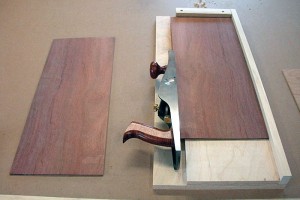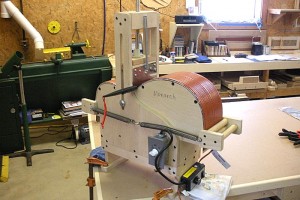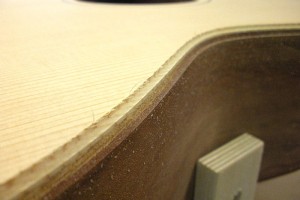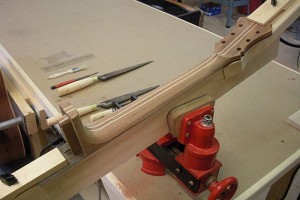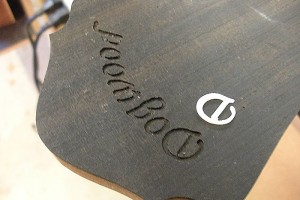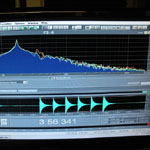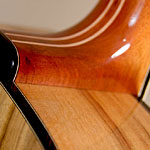The building of any guitar begins with selecting the woods to be used. A bookmatched set of Spruce or Cedar is selected for the top, and a back and side set is chosen for the body. Standard woods for the latter are Rosewood, Mahogany, or Maple. Many other woods can be used, and the choice […]
Building a Monarch: The Box
Bending the sides begins the process of making a guitar body. A bending form is required for each type and size of body, and the appropriate form is installed in the bending machine. This jig uses a heating blanket and spring loaded cauls to gently bend the sides to shape. The sides are carefully laid […]
Building a Monarch: Binding
The quality of the binding and purfling work is one of the factors that makes a guitar a true work of art. Some builders install bindings and purflings in one step, and this can lead to less-than-perfect results. Dogwood guitars are bound using a multi-step process that ensures a tight, no-gap installation of the purflings […]
Building a Monarch: The Neck
Guitar construction can be divided into to major sections: The body and the neck. Neck construction begins with gluing up a blank. Although some guitar necks are made from one solid piece of wood, many builders make necks using a laminated blank. This adds visual appeal to the neck as well as making it stronger […]
Building a Monarch: Pearl Inlay
Shell inlays are a time-honored way of adding flair, beauty, and value to musical instruments. The two primary types of shell used in making guitar inlays are Mother of Pearl and Abalone. Each of these come in several color varieties. There are many options available for using inlays to dress up a guitar. Fretboard and […]
